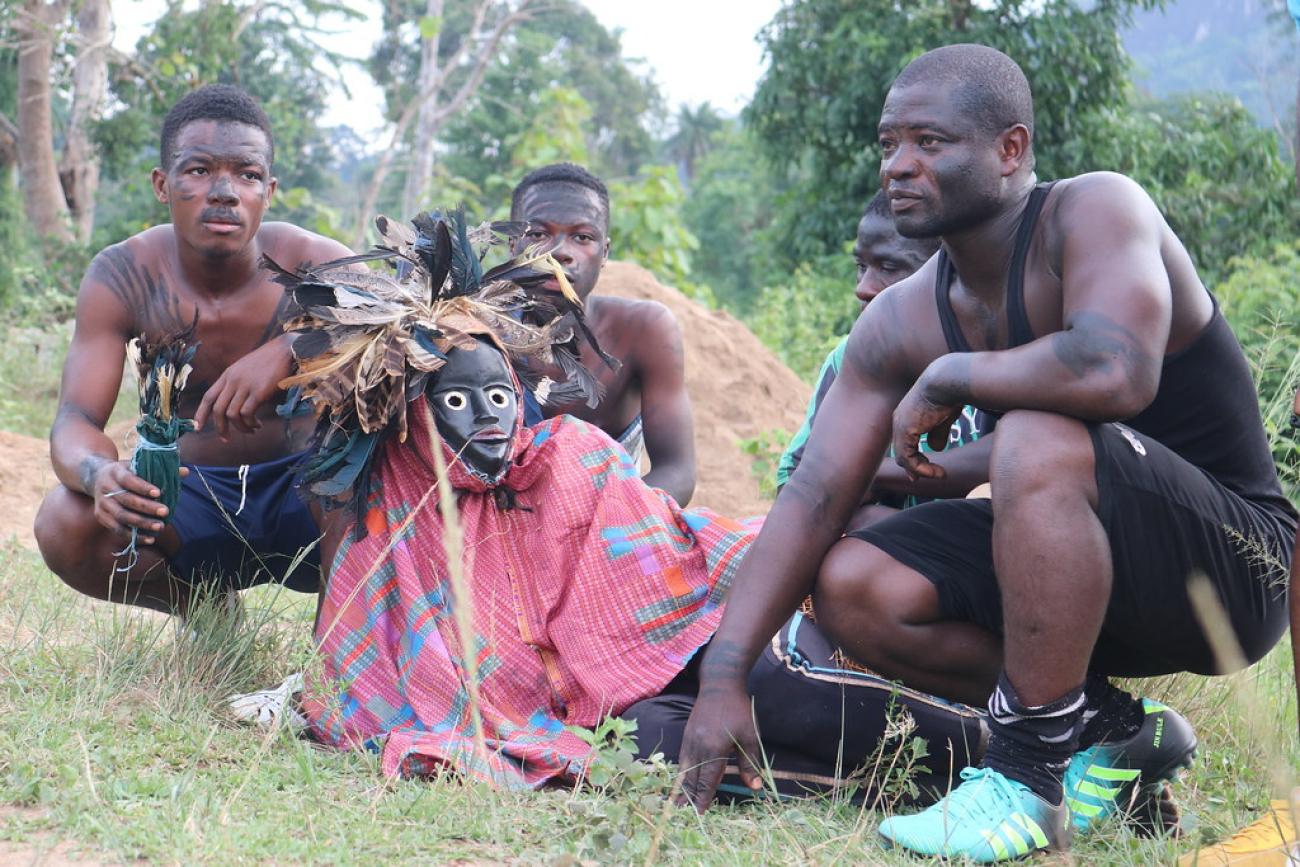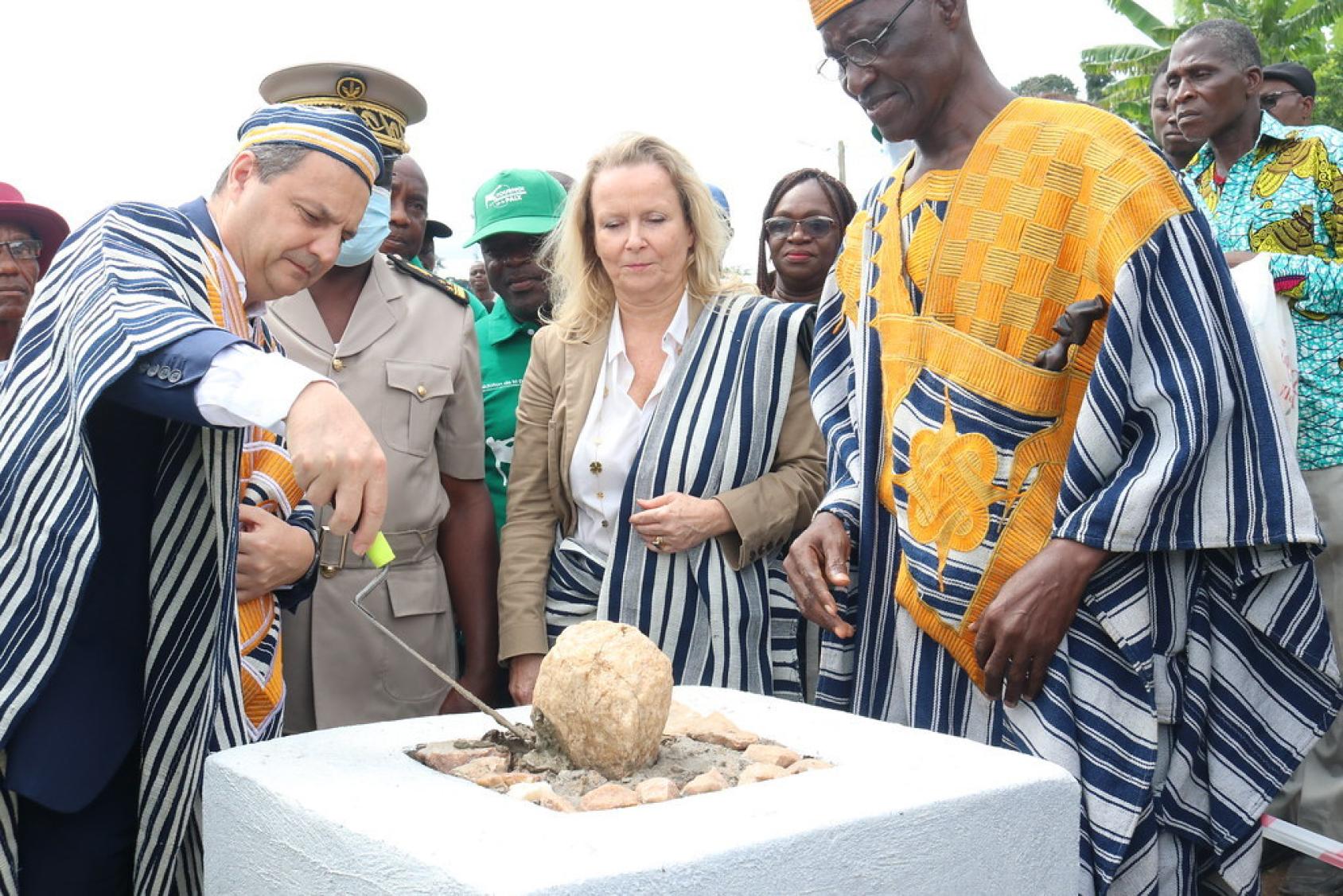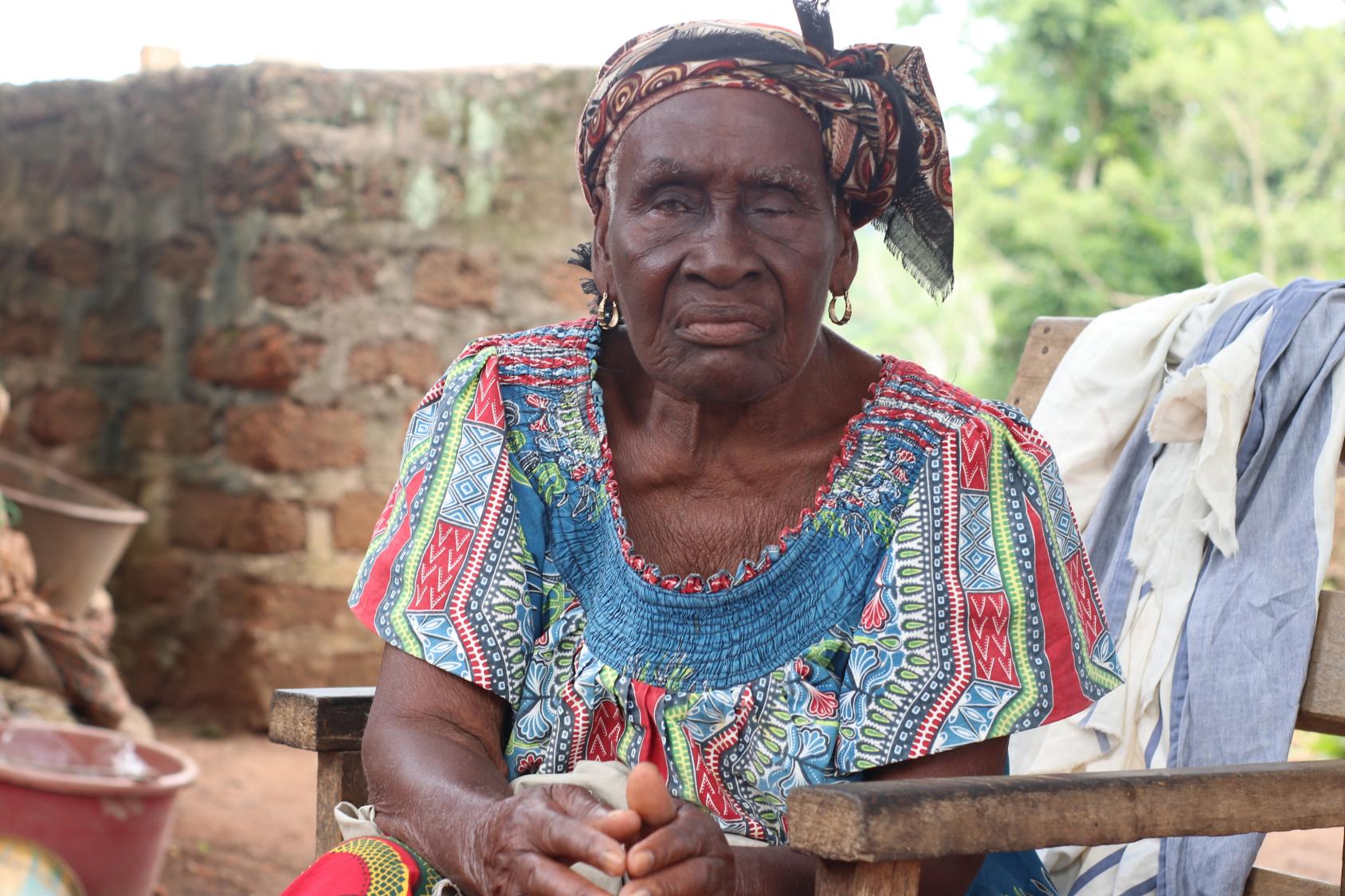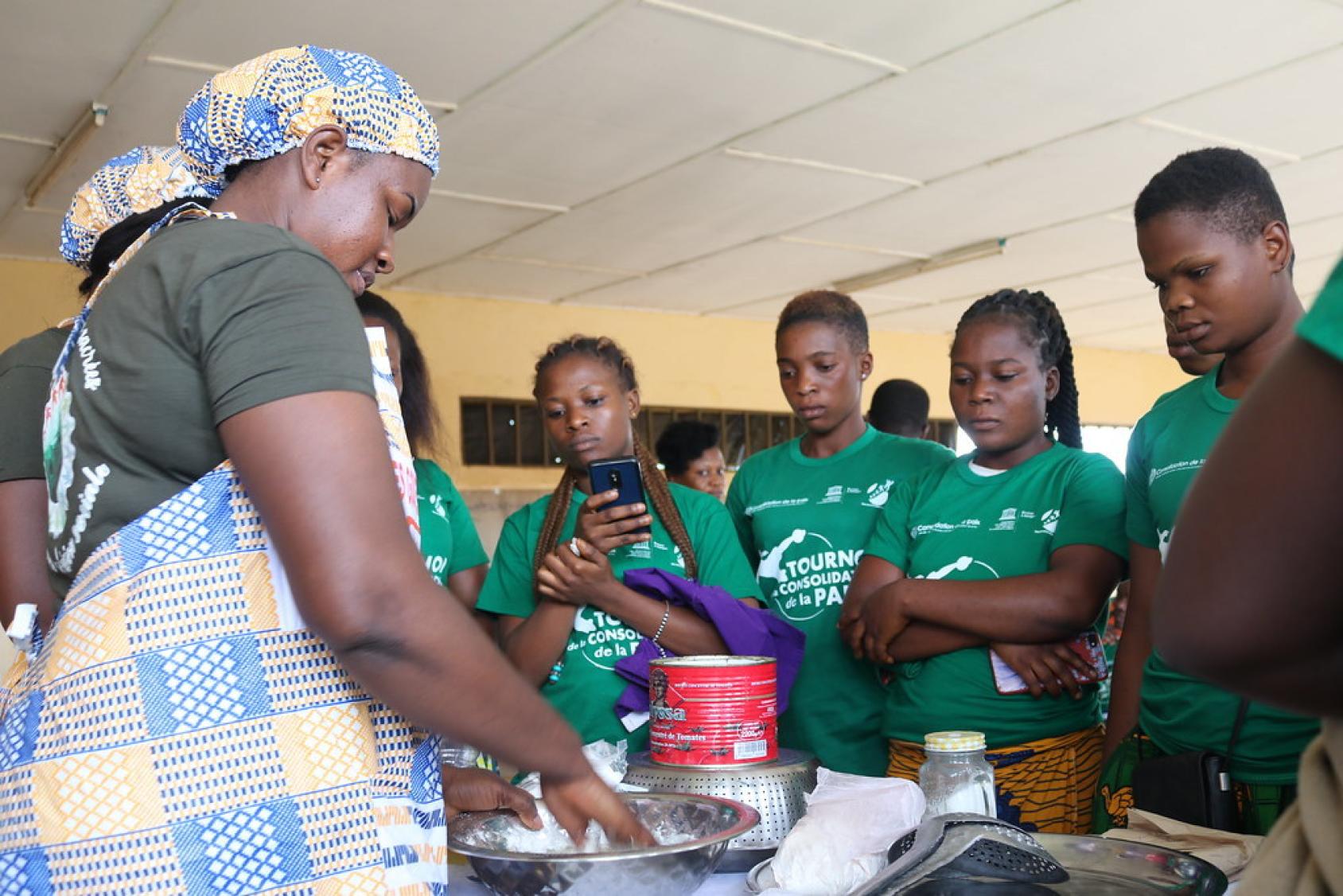Protecting sacred forests in Côte d'Ivoire, for people and planet

On 5 June, the UN celebrates World Environment Day, a day to remind us how fragile nature is, and how much we all depend on it in order to live and thrive. Climate change, pollution, and the destruction of natural habitats and biodiversity are three critical issues the UN is calling for urgent action to tackle, under one central idea: We only have one Earth and we must undertake profound transformations to preserve and restore it.
In Côte d'Ivoire, the UN is helping preserve and ensure the sustainable management of one of the country’s invaluable natural sources of wealth – the “sacred forests”.
Côte d'Ivoire’s forests, a major asset for biodiversity and sustainable development
Côte d'Ivoire is an extremely biodiverse country. Its forests are home to exceptional biological wealth, but they are deteriorating at an unprecedented rate, and many have disappeared altogether. According to a 2021 report by UNEP's World Conservation Monitoring Centre (UNEP-WCMC), in collaboration with the UN-REDD Programme and the CocoaSoils Initiative, the country's forest cover is now below 9%, down from 15% in the mid-1980s.
The reasons for this sharp decline include the extension of farming on forest land, logging for timber production, increased difficulty in monitoring and surveillance due to the presence of armed gold panners, and the poaching of wild fauna and flora. The conflict which disrupted the country in the 2000s and 2010s has placed even greater pressure on the country's forests, according to UNEP's Post-Conflict Environmental Assessment.

The county of Biankouma, in western Côte d'Ivoire has a wealth of “sacred forests". The country has more than 6,700 of them. Considered by the communities in the surrounding villages to be sacred temples and home to the souls of their protective ancestors, sacred forests play a key role in constructing the identity of the communities and shaping their ritual lives. These forests and the species they shelter have therefore always been protected and preserved.
Today, however, they are facing serious threat.
UNESCO and UNDP have been working jointly with the Government of Côte d'Ivoire to help the rural communities in the county of Biankouma protect their forests, preserve the botanical riches they hold, promote the cultural heritage they represent among youth, and preventing intercommunity confrontations, which have broken out more often as a result of their desecration and exploitation.
"Sacred forests": Preserving the legacy, transmitting ancestral knowledge and empowering women and youth
Together the two UN entities helped carry out an inventory and mapping of existing plant species and functionalities in five localities across the county: Gbombelo, Dio, Gboné, Gandi and Biankouma.

"With this project, traditional leaders, who are the guardians of our cultural heritage, with support from researchers, carried out a cultural inventory and mapping of the floral species and functionalities of the sacred forests of the county of Biankouma," explained Diomandé Dro, Chief of the canton of Biankouma.
"This knowledge was passed on to the younger generations to allow them to better understand the different functions and roles of these forests, their geolocation and delimitation, as well as the diverse vegetal essences they shelter," Diomandé Dro added.
During the project, UNESCO and UNDP also helped restore several sacred forests in the county.
"UNESCO and UNDP also helped us restore the cover and ecosystems of 11 sacred forests that had been degraded by farming and illegal gold panning, and to create a local committee for the protection and management of sacred forests," Dro said.

Ensuring that traditional knowledge and know-how was passed down through the generations was also a key priority. 50 young women were thus trained in forest conservation techniques and taught how to use medicinal plants by a group of 25 older women who practice traditional medicine. Cooking kits were also distributed to the young beneficiaries so they can engage in income-generating activities.
"For us old women, theses trainings are an intergenerational transmission process – They give us an opportunity to pass on our knowledge and cultural practice of traditional medicine to the younger generation," said Yara Drapouh, one of the trainers.
Besides, the project supported more than 500 young people including 98 women - start their own businesses in agroforestry and as well as in traditional fritter trade. To help drive local tourism and cultural development, 25 young people were also trained to become tour guides, learning how to promote the heritage of their sacred forests.

Social cohesion: another key pillar for sustainably managed sacred forests
For the communities of Biankouma county, the violation and exploitation of their sacred forests by other communities do not just threaten their livelihoods but also their spiritual wellbeing and way of life, as, according to their beliefs, any act of desecration of these forests could curse the whole community.
Recognizing the importance of social cohesion between communities across the county, UNESCO partnered with UNDP (with support from the UN Peacebuilding Fund) from 2020 and 2021 to train hundreds of young people and community leaders including women in how to prevent and manage generational and identity conflict arising from the desecration and exploitation of sacred forests.
The project thus established local peace committees, set up various forums for intercommunity dialogue to combat stereotypes and mistrust and to advocate for peaceful coexistence, organized social sports-related cohesion activities, including "mask race" tournaments, and held several artistic and cultural events.
To incentivize people away from forest logging, the project also launched livestock, beekeeping and gardening intercommunity cooperation initiatives and constructed multifunctional mills, primary schools, youth centers and spaces dedicated to preventing and resolving conflicts to serve communities across the county.
"The forest has been an integral part of our village, of our lives, for centuries. It protects us, soothes us, listens to us. [...]. We want to preserve it and we want to safeguard it. Without it, we lose our soul, we lose our identity," said a resident of the village of Yepleu, in the Biankouma county.
All over the world, biodiversity is collapsing, causing entire ecosystems to disappear, aggravating the causes and effects of climate change, impoverishing communities that depend on it to sustain their livelihoods, and triggering conflict over the scarcity of biological resources. Forests are one of the planet’s main sources of biodiversity. If we want to continue to enjoy the social, economic and environmental rewards they offer, then we must start managing them in a sustainable and respectful way.
Alongside this initiative, the UN is leading projects in Côte d'Ivoire with a focus on promoting agroforestry, which not only helps to restore local biodiversity, but also increases agricultural productivity, thereby reducing the conversion of forests into farmland. Applied to cocoa cultivation - one of the major causes of deforestation in the country - agroforestry could significantly contribute to restoring the Ivorian forest cover.
Act now to protect the environment! Read UNEP's Practical Guide on how to get involved and join the #OnlyOneEarth campaign to celebrate, protect and restore planet Earth.
Co-authored originally in French by the UN in Côte d'Ivoire, the UNESCO Office in Côte d’Ivoire and the UN Development Coordination Office (DCO). Translated into English by DCO.
For more information on the UN's work in Côte d'Ivoire, please visit Cotedivoire.UN.org. To learn more about the results of our work in this area and beyond, read the SDGs section of the 2022 UNSDG Chair Report on DCO.













